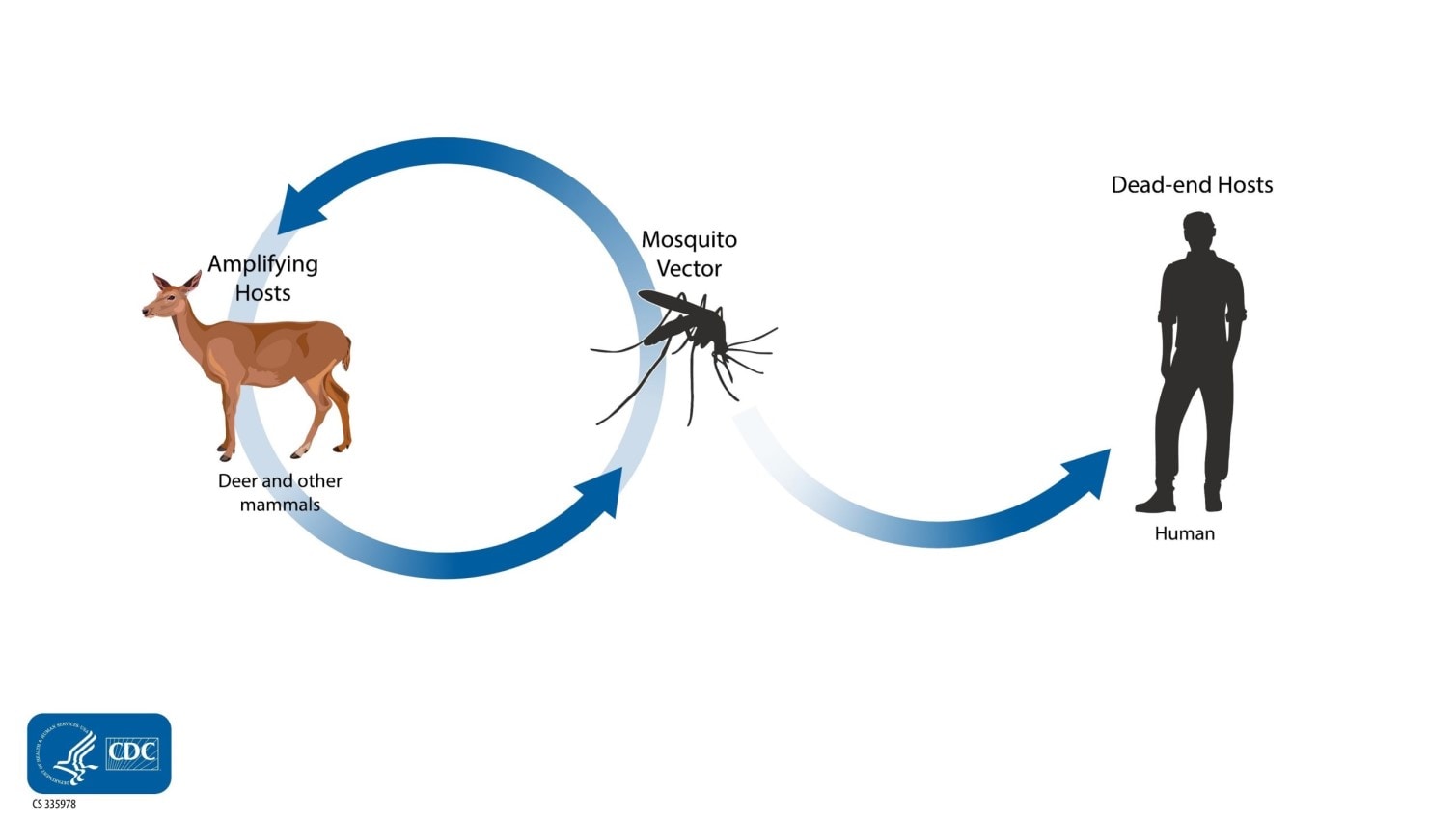Key points
- Cache Valley virus disease is caused by virus in the genus Orthobunyavirus.
- Cache Valley virus is maintained in the environment by numerous mosquito species and several ungulates (e.g., deer, horses, sheep).
- Humans are dead-end hosts, meaning they cannot transmit the virus to mosquitoes that feed on them.
- Cache Valley virus has been documented to be transmitted through blood transfusion.

Virus
Cache Valley virus is a mosquito-borne virus in the family Peribunyaviridae, genus Orthobunyavirus, and serogroup Bunyamwera.
Subtypes of Cache Valley virus, including Tlacotalpan and Cholul viruses, have been found in Mexico.
Other viruses in the Bunyamwera serogroup of medical importance related to Cache Valley virus include Maguari and Fort Sherman viruses.
Transmission

Cache Valley virus is spread to people by the bite of an infected mosquito.
Mosquitoes become infected when they feed on mammals that have the virus in their blood. Infected mosquitoes can then spread the virus to people and other animals by biting them.
Cache Valley virus has been found in many types of mosquitoes (including Anopheles, Culiseta, Coquillettidia, and Aedes species), but it is not known which species are the main ones that spread the virus to humans. The mammals most likely involved in the transmission cycle are deer, cattle, horses, and sheep. People do not develop high enough levels of the virus in their blood to infect mosquitoes and further spread the disease. As a result, people are considered "dead-end" hosts for Cache Valley virus.
There has been one documented case of Cache Valley virus blood transfusion transmission.
- Al-Heeti O, Wu EL, Ison MG, Saluja RK, Ramsey G, Matkovic E, et al. Transfusion-transmitted Cache Valley virus infection in a kidney transplant recipient with meningoencephalitis. Clin Infect Dis. 2023 Feb 8;76(3):e1320-e1327. doi: 10.1093/cid/ciac566.
- Baker M, Hughes HR, Naqvi SH, Yates K, Velez JO, McGuirk S, et al. Reassortant Cache Valley virus associated with acute febrile, nonneurologic illness, Missouri. Clin Infect Dis. 2021;73(9):1700-1702. doi: 10.1093/cid/ciab175.
- Hughes HR, Kenney JL, Calvert AE. Cache Valley virus: an emerging arbovirus of public and veterinary health importance. J Med Entomol. 2023;60(6):1230-1241. doi: 10.1093/jme/tjad058.
